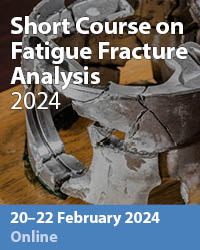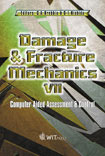Accounting For Effects Of Constraint On Propagation Of A Fatigue Crack
Price
Free (open access)
Transaction
Volume
37
Pages
Published
2002
Size
445 kb
Paper DOI
10.2495/DM020241
Copyright
WIT Press
Author(s)
Z Knésl, S Seitl & P Hutar
Abstract
The paper describes the application of two parameter constraint-based fracture mechanics to the behavior of fatigue cracks. The different levels of constraint in the vicinity of the tip of a fatigue crack are quantified by means of the T-stress. The paper seeks to quantify the experimentally observed effect of the specimen geometry on the rate of propagation of a fatigue crack. To this aim a modified Paris law that takes the different values of the corresponding constraint parameter T into account is then suggested. It is shown that, depending upon the material properties, the geometry, and the loading of the specimen, a constraint may cause a difference of as much as 100% in the rate of propagation of a fatigue crack for extreme values of the T-stress. The problem is solved numerically by means of the finite element method, and results are compared with data obtained experimentally using two specimens with different values of the T-stress (a center cracked and a compact tension test specimen). 1 Introduction In order to use fracture mechanics to predict the lifetime of a structure the corresponding material data must be known. The current methods of estimating the residual fatigue life in the high cycle range, i.e., assuming linear elastic fracture mechanics, are based on semi-empirical relations between the crack growth rate da/dN (with a = crack length, N = number of loading cycles) and the stress intensity factor range AK (e.g.[1,2]), where AK = Kmax -Kmin; Kmax and Kmin, are the extreme values of the K factor in the load cycle, Da/dN = F(AK) (1) The mathematical form of the function F(AK) has to be determined experimentally and is supposed to be a material curve. Most of the experimental
Keywords





